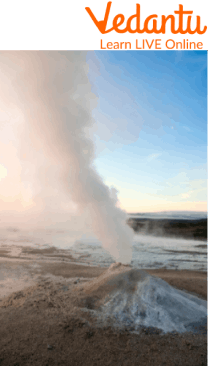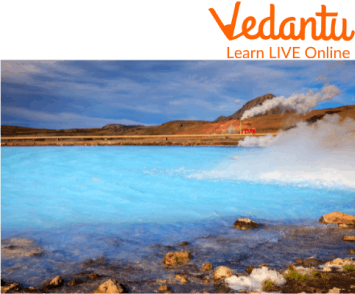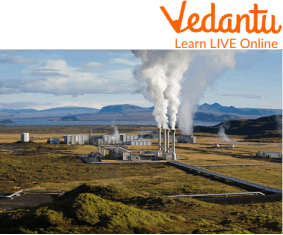




Overview of Geothermal Energy
In some places, geothermal energy has been used for heating and cooking for thousands of years. It is merely energy produced by the heat of the Earth. The rock and liquids beneath the Earth's crust hold this thermal energy. From underground sources to several kilometres below the surface or even deeper still to the molten rock known as magma, it can be found. Geothermal energy is an example of renewable source of energy.
Sounds fascinating, doesn't it? Let's get a closer look into the subject and learn more about Geothermal Energy.
What is Geothermal Energy?
Renewable energy derived from the Earth's core is known as geothermal energy. It originates from heat produced during the planet's initial creation and the radioactivity of elements. In the earth's core, rocks and liquids contain this thermal energy. This is geothermal energy definition. Thermal energy is continuously transferred from the planet's interior to its surface due to the difference in temperature between the earth's core and its surface.
A portion of the rock inside the Earth's core melts at temperatures over 4000°C to generate hot, molten rocks known as magma. Given that the mantle is lighter than the underlying rock, this heat also forces a proportion of it to convect upward and act plastically.
Geothermal energy is an example of potential resources (potential resources exist in a region and can be used in the future). The rock and liquids in the crust of the Earth can get as hot as 370°C. It is possible to find thermal energy in the rocks and liquids as deep as many miles below the Earth's surface.

Geothermal Energy from Earth’s Core
Example of Geothermal Energy
1. Geothermal-Heated Homes
The primary use of geothermal energy is for home heating. A huge network of coils that harvests heat from the earth is connected to the perfect geothermal heat pump. Then, this heat is distributed throughout the house with the assistance of conventional ducts.
2. Geothermal Power Systems
Electricity can be produced from the thermal energy below the ground's surface. Steam from the earth is used by geothermal power systems to produce electricity.
3. Warm Springs
The earth is home to a variety of natural hot springs. When deep water interacts with a heated rock, hot springs are created. Geological heat is released while the water warms up.
4. Greenhouse
A lake is of the utmost importance if it is located next to a greenhouse. The lake is equipped with a network of heating coils, and antifreeze is poured into the water.
5. Fumarole
Water already existing underground heats up as it comes into contact with hot stone or magma and escapes through a vent. Fumarole is the name of this event.
6. Spa
Geothermal energy is used in activities that are related to health and wellness. Natural springs and fumaroles are used in spas as well as other related industries to produce heat and steam. This method of utilising geothermal energy has existed for a very long time.

Spa using Geothermal Energy
How Does Geothermal Energy Work?
Geothermal power is heat that is produced by the planet's interior. It is a substitute energy source suitable for heating, bathing, and cooking. Additionally, it can be changed into electricity. Everywhere on the surface of the Earth, geothermal energy is accessible. Some locations, like Iceland, have heat that is so close to the ground that it may be used as a source of energy with ease. To get to the heat in some locations, holes must be bored through the rocks.
The breakdown of some chemical elements results in the production of heat from within the Earth. Friction caused by the collision of continental plates also generates geothermal energy. The ideal places to use geothermal power are near plate borders or volcanoes. Lava, geysers, fumaroles, and geysers are among the surface features that are frequently found in areas close to volcanic activity. Geothermal energy extraction may be more difficult in other locations.

Steam Rises from the Smokestacks of a Geothermal Power Station
Disadvantages of Geothermal Energy
The disadvantages of geothermal energy are as follows:
Choosing a place where drilling can reach adequate hot rocks is essential. In the UK, there aren't many of these.
In some cases, if too much heat energy is removed, the heat source may "dry up."
There may be minerals and hazardous gases that need to be properly rid of.
Summary
The heat from the earth is known as geothermal energy. The Greek words geo (earth) and thermal are where the word geothermal (heat) originates. Due to the ongoing production of heat deep inside the ground, geothermal energy is a renewable energy source. Geothermal energy is used to produce electricity, heat buildings, and provide hot water to people. This article was about geothermal energy for kids. We discussed geothermal in every aspect in the above article.
FAQs on Geothermal Energy for Kids
1. Geothermal energy, is it safe?
Yes, if done properly. Although there are hazards with any industrial operation, geothermal energy extraction from the proper location is safe.
2. Which nation uses geothermal energy the most?
Iceland uses the most geothermal energy in the world.
3. Is geothermal energy worth the price?
They work about 400% faster than a conventional furnace, which is one of their main advantages. This energy is also renewable, making it advantageous for the environment, you, and your utility bill.









